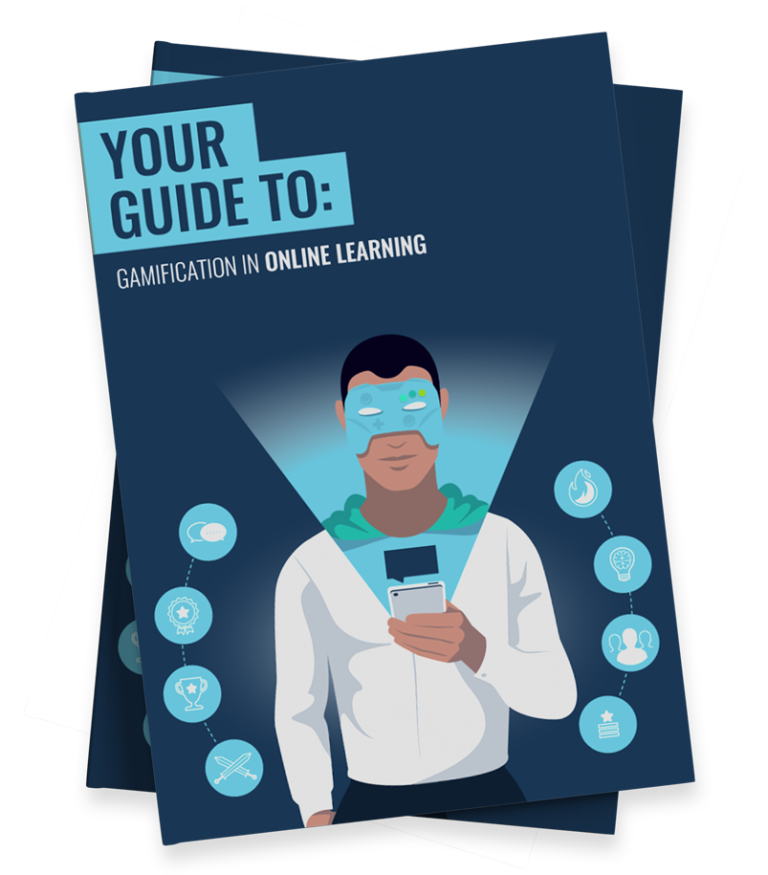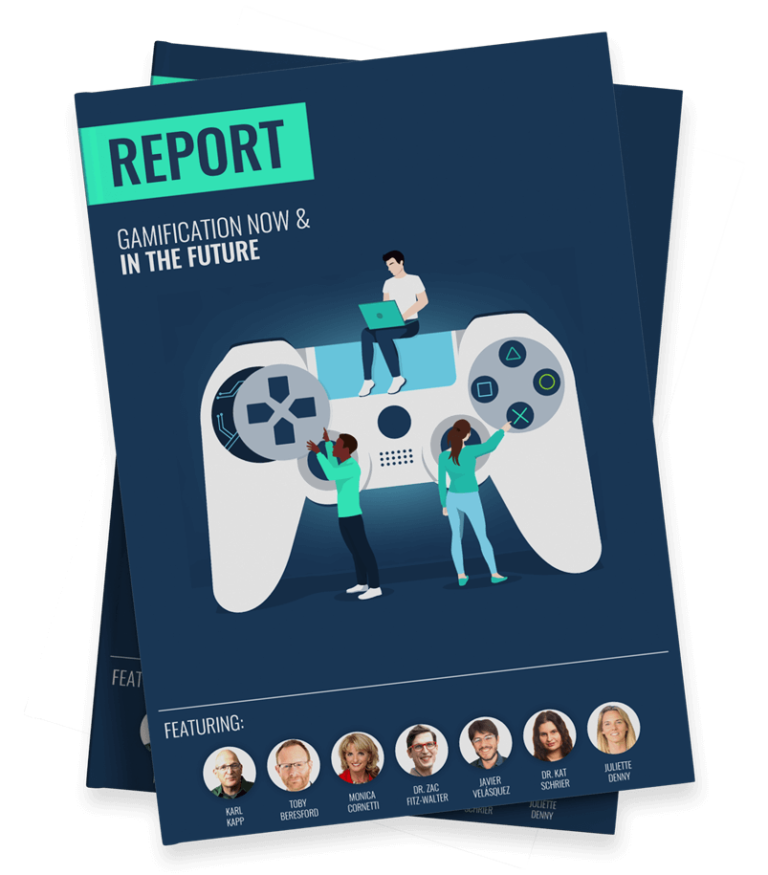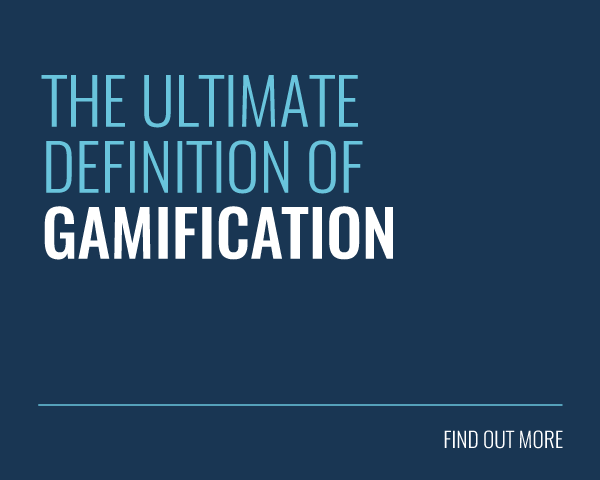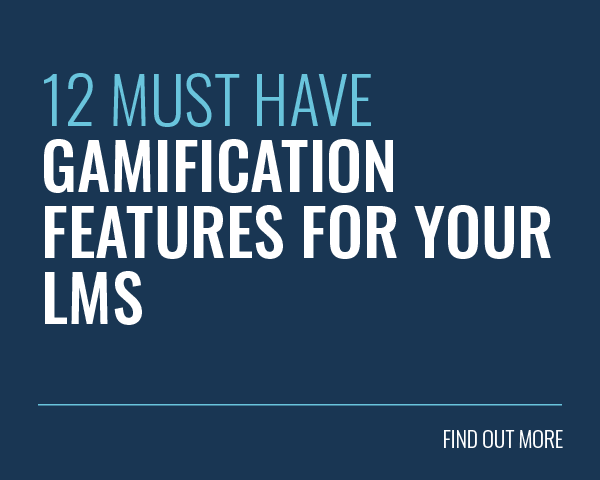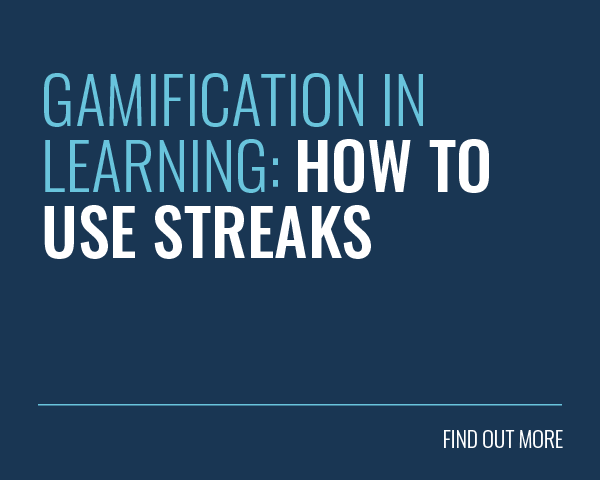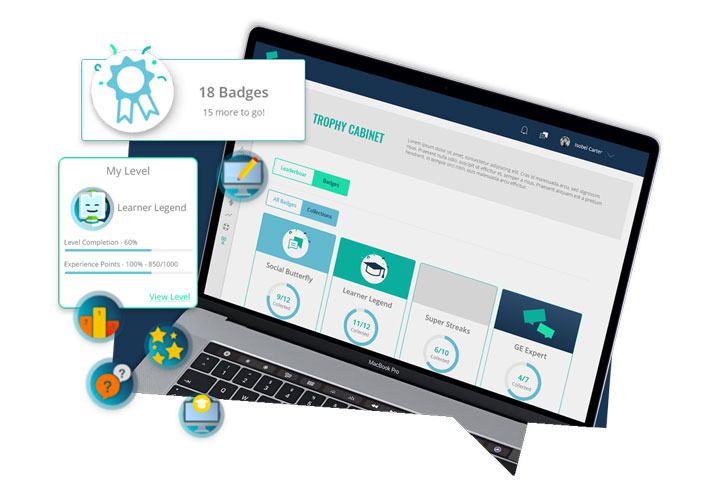
Creating engaging online learning experiences is no easy task. We should know. We’ve made it our mission to wage war on dull online learning. Luckily, gamification can help us to turn the tables. And one of the most powerful game mechanics in our arsenal is Experience Points (XP).
If you’ve played any role-playing game, video game or board game before, there’s a good chance you’ll be familiar with Experience Points.
But in this article, we’ll be pushing deeper. We’ll look at the origin of XP, how points are typically used and how they can be deployed to serve your learning goals.
If you make it to the end of this article, you’ll earn 50XP. So, let’s get started!
What Are Experience Points (XP)?
In most games, Experience Points act as a measure of how well the player has mastered the virtual environment. More points means more mastery. And mastery feels good!
The Oxford Dictionary defines XP as ‘points that you earn in a computer game for completing tasks, collecting items, etc.’
But there’s no reason to limit Experience Points to computer games. They can be applied to all manner of circumstances to help drive engagement.
This definition also fails to capture a few important concepts that are inherently linked to Experience Points.
Difficulty Weighting: Overcoming obstacles helps us to earn XP. But there’s more to it than that. After all, we get more Experience Points for overcoming tougher challenges. This helps us to understand the level of difficulty associated with each task. This kind of pre-emptive feedback is a useful tool for driving decision-making.
Compound Interest: Another important quality of XP is its cumulative nature. It builds over time. In other words, it won’t disappear after you’ve obtained it. As you complete tasks, your XP tally will grow. Without this quality, collecting Experience Points wouldn’t be half as addictive. It also makes the next characteristic possible.
Levelling Up: Experience points and Levels often have a direct relationship. Typically, each level will have an associated XP target. Once the user hits this target, they’ll level up. They’ll then be set a new target. This is a great way to mark your progress.
Limiting Access: Experience points can also be used to limit access to certain areas of the game world. For instance, you may need to have a certain number of points (or be a certain level) in order to access new content. This is useful for breaking up the user journey and controlling the difficulty of available tasks.
Cashing In: Experience points are a unit of measurement. In this sense, they have a set value. This means they can be traded in for other items. In role-playing games, you might trade your XP for items or new skills. In learning and development, you could trade your Experience Points for real-world rewards.
What’s The History of XP?
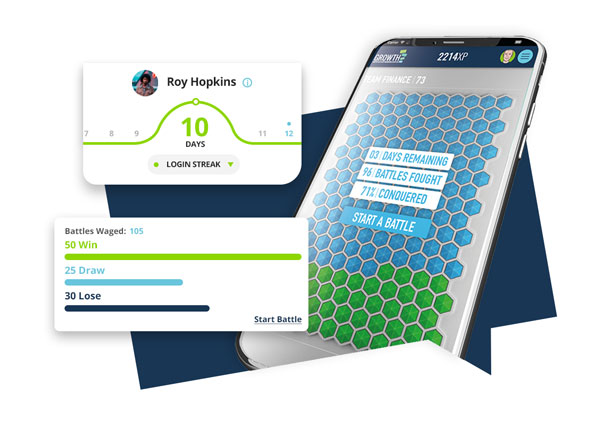 Point systems have been used in games for almost as long as games have existed. After all, there has to be some way of keeping track of who’s winning and losing.
Point systems have been used in games for almost as long as games have existed. After all, there has to be some way of keeping track of who’s winning and losing.
However, we have David Arneson and Gary Gygax to thank for the creation and popularisation of full-fledged Experience Points systems. Arneson and Gygax are known as the fathers of role-playing games for good reason.
Back in 1974, they worked on a fantasy war game called Blackmoor. Following playtests, Arneson and Gygax added Experience Points ‘to allow people to reach higher levels’.
Later that year, Arneson and Gygax would release Dungeons and Dragons — arguably the most influential game of all time. D&D utilised the same Experience Points system that they had introduced in Blackmoor. In doing so, it brought the concept to a much wider audience.
Since then, Experience Points have been deployed in some of gaming’s biggest franchises. This includes Final Fantasy, Call of Duty, Pokémon, The Elder Scrolls, Fortnite, World of Warcraft and many others.
They’re used in tabletop role-playing games, board games, achievement and trophy systems and many other places. You could even argue that modern loyalty schemes (like air miles) are based on the concept of Experience Points.
Now that you’re an Experience Points expert, let’s move onto the world of learning and development.
![]()
How to Use Experience Points to Engage Learners
As an engagement engine, gamification is remarkably effective in a number of contexts. The world of learning and development is no different. After all:
- 95% of employees enjoy using gaming-inspired elements in the workplace.
- 72% of employees claim that gamification makes them work harder.
- Gamified training generates 14% higher results on skill-based assessments.
However, game mechanics are not a silver bullet solution. You can’t add XP to your learning system and expect instant engagement from your learners. To produce the best results, you need a proper strategy.
With that in mind, here are eight tips to help you get more from your Experience Points:
1. Motivate Progression Through Training Content
Experience points are a unit of measurement. This means they hold value. As a result, they can be used to direct your learners and incentivise the right kind of activity.
You should use this motivational force to drive progress through your online learning environment. As a result, your training content becomes the equivalent of a quest objective in a video game.
Rather than tasking users with collecting a Drakefire Amulet or defeating twelve Murlocs, you’re asking them to actively engage with your content. As a result, they should earn XP.
As learners progress (and engage more), their point tally should increase. Eventually, they should level up and earn access to new experiences and the opportunity to earn even more XP. Thus the cycle begins afresh!
2. Encourage Interaction in Your Learning Environment
Adding XP to your content is a good start. But the joy of earning Experience Points shouldn’t be limited to formal training completion. Some learning management systems (including Growth Engineering LMS) will let you add XP to other platform interactions.
As an admin, you can decide which behaviours you want to encourage, reward and celebrate. For instance, you could:
- Offer newbies a warm welcome with 10XP for logging in for the first time.
- Provide XP for exploring other areas of the platform.
- Or reward XP based on repeat activities (for instance, downloading 10 documents).
This will encourage your learners to explore and deepen their engagement. Your ultimate goal should be to create a learning culture you are proud of!
3. Incentivise Social Activity
According to the 70:20:10 model, formal training only accounts for 10% of all learning intake. As a result, informal learning experiences have to pick up the slack and generate the remaining 90%. A big part of this comes from knowledge sharing and social learning.
If your learning system includes social features, then why not use XP to encourage activity? For example, you could offer:
- 5XP for every ‘Like’.
- 10XP for every ‘Reply’.
- And 15XP for each unique ‘Post’.
You could even have a moderator or learning administrator provide bonus XP for particularly helpful posts. That way you’re encouraging quality over quantity!
4. Weight Points Appropriately
This one’s important. Assigning consistent, meaningful ‘weighting’ to XP on your learning system is paramount to success.
Weighting refers to the relative value or amount of XP awarded for each action performed within the learning environment. The output (or reward) should always match the input (the effort exerted).
What’s wrong with this picture?
- 10XP for creating a social post.
- 20XP for completing an eLearning unit.
- 100XP for downloading a PDF.
The first two examples seem simple enough. After all, completing an eLearning unit is harder than creating a social post (in most cases). However, downloading a PDF is not 10x harder than creating a social post or 5x harder than completing an eLearning unit. The weighting is off.
Regardless of how much XP you offer, what’s important is consistency. It ensures that Experience Points remain meaningful and prevents your learners from becoming disengaged.
5. Identify Engagement Patterns
Experience points aren’t purely about making learners feel good. The accumulation of XP helps admins to identify learner engagement patterns.
In other words, you can use XP to identify who’s interacting with your LMS and who isn’t. Those with high point totals are your top performers. Those with lower scores may need more support or encouragement. Consider this an engagement red flag!
Once you identify a pattern, you can do something about it. You can celebrate your top performers. You can provide guidance to those who are struggling. And you can also refine your programme in line with the data. Not bad, right?
6. Establish Internal Expertise
Further to the above point, XP is a simple way to identify internal expertise. After all, you can use point tallies to spot potential subject matter experts.
If you’ve set up your learning programme in the right way, learners with the highest XP scores are likely to be the most knowledgeable. Whilst you may want to verify their expertise through an assessment or an interview, this is a good starting point.
Once identified, you can then use your platform to showcase their expertise. For example, Growth Engineering LMS provides an Experts Area where SMEs can solicit questions. Their answers can then be made public for everyone to view.
This creates a healthy stockpile of information and prevents knowledge silos from forming.
7. Provide Real World Rewards
Experience points help to generate intrinsic motivation. This is the kind of motivation that comes from within. It’s linked to self-actualisation, a sense of competence and task accomplishment. After all, XP is a clear marker of our progress.
But what if Experience Points could also hold extrinsic motivational value? In this case, the reward exists outside of ourselves. It’s usually linked to money, status, reward or prizes.
To do this, you could allow your learners to trade the XP they’ve earned for real-world rewards. For instance, our Reward Centre lets users ‘cash in’ their virtual rewards (XP and Badges) for something tangible. This could include:
- Lunch with the CEO
- A ‘day off’ pass
- Gift vouchers
- A charitable donation
- Expert status on the platform
What you pick is up to you. As long as they have perceived value to your learners, you can use rewards to increase engagement across your platform.
8. Link XP to Your Other Game Mechanics
A good gamification strategy doesn’t just rely on one game mechanic. You’ve got plenty to pick from, so don’t be parsimonious.
Your Experience Points shouldn’t exist in a vacuum. They should interact with other game mechanics within your system to create a cohesive experience. For instance:
- Badges: Each ‘Badge’ earned as a reward on your platform should come with an associated XP total.
- Levels: Collecting enough XP by completing learning tasks should allow the learner to ‘Level Up’. This should grant access to new learning experiences.
- Leaderboards: Learners should be ranked on the platform Leaderboard based on their XP tallies.
This helps to tie your strategy together and drives a deeper sense of meaning. The kind of meaning that fuels purpose and generates real results.
Final Words
You made it to the end of the article. Here’s 50XP!
More importantly, you now know what Experience Points are and how to deploy them successfully within an online learning environment.
We’ve seen how they can encourage formal and informal learning experiences. We’ve learnt the importance of consistent XP weighting. We know that Experience Points can be used to monitor engagement. And we’ve also seen that they can be traded in for real-world rewards.
The rest is up to you. How will you deploy Experience Points within your learning programme?
Hungry for more gamification knowledge? Download our new ‘Gamification: Now & In The Future’ report to unlock a treasure trove of useful insights.

